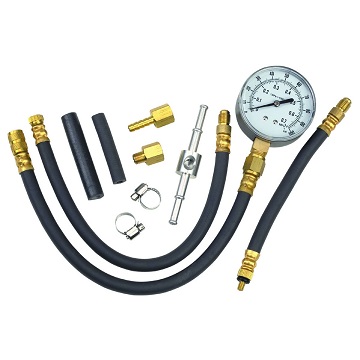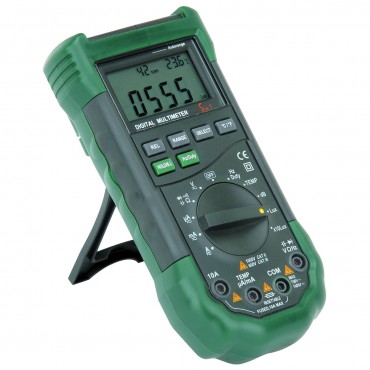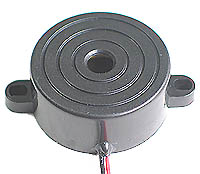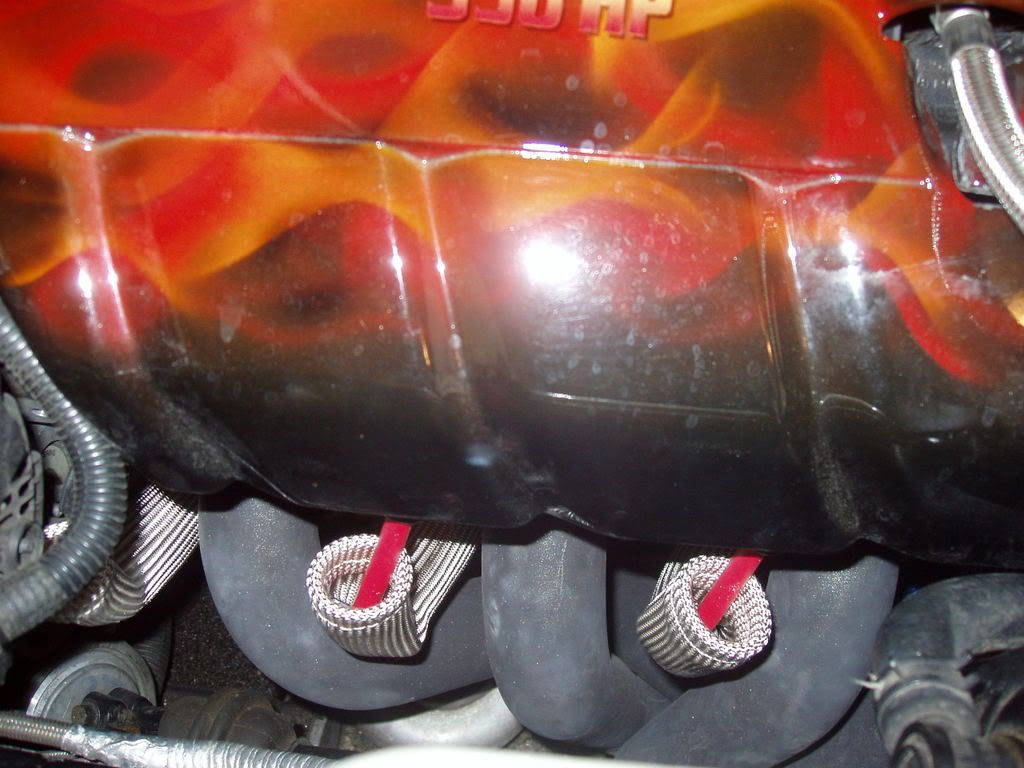your simply wasting your time and money if you don,t own a few basic tools like a multi meter ,fuel pressure and vacuum gauge
and a trouble code scanner,
and a vehicle and year specific SHOP MANUAL!
GET A CODE SCANNER AND CHECK TROUBLE CODES
http://garage.grumpysperformance.com/index.php?threads/code-scanners-software.3096/#post-76215
http://garage.grumpysperformance.co...lay-switch-locations-and-info.728/#post-54562
http://garage.grumpysperformance.co...le-shooting-flow-chart-info.11536/#post-71845
http://garage.grumpysperformance.com/index.php?threads/c4-c5-corvette-trouble-codes.2697/
http://garage.grumpysperformance.com/index.php?threads/how-altenators-work.355/#post-62266
http://garage.grumpysperformance.com/index.php?threads/testing-an-alternator.3222/#post-46703
set up a multi meter like this picture posted a bit lower in this thread, and pull fuses one at a time to locate shorted circuits
obviously the battery connections and cables need to be carefully checked and of course the alternator needs to be tested to verify its producing the voltage and current its designed to provide.
If your trying to locate a electrical drain causing the battery to go dead over a few days time, you could start by disconnect the ground or neg battery cable battery lead , put a digital volt meter between negative cable and battery post and measure current amp draw while , your using needle nose pliers and pulling fuses one by one to identify the circuit that has the electrical drain on it..
Need to duct tape over pass side door interior light switch so you can access fuse panel without interior light on, with that pass side door open to allow the access to the fuse panel.
There are also other items fed diectly off the battery ( through fusible links) that would have to be metered individually after removing wires from the post behind battery.
Headlight motors , heater control module , etc have hot feed ignition key off.
don,t try starting the car until the battery cable is replaced and cleaned as the starter load amps will cook a multi meter.

as usual you generally start the process by pulling the trouble codes , and looking up what they indicate in the factory shop manual,
many FLAKY problems in the cars electric system can be traced to bad grounds, loose connections, loose grounds, and pinched wires,blown fuses, on older cars corrosion is also a factor.
water that gets into the wiring can be a huge problem,wet, loose, or broken electrical connectors or corrosion on connectors, is also possibly a cause of intermittent problems
many times a V.O.M. meter can help isolate the cause.
think back, have you installed gauges, interior panels,installed body panels, rugs or interior components recently, just before the problem started, a screw in the wrong place, an overly tight bolt,or components pinching wires or grounds that were not re-tightened correctly can easily hit , pinch or cause problems with wires.
there's usually a REASON things started to go weird, and more times than most of us want to admit its something we did previously or failure to keep the car dry thats the source.
systems don,t have to be related to cause problems, a pinched wire can drain the battery over several days, your turn signals or interior lights might not work if an engine ground or ground to the dash electronics is loose, pull fuses,check grounds, get a darn factory shop manual, its MANDATORY WITH MOST OLDER PERFORMANCE CAR OWNERSHIP!
USE IT TOO isolate and correct those problems.
step one is getting a shop manual so you can easily trace the wires and colors, obviously if it blowing the fuze the indications point to a short or ground, being the cause,but a component that got wet or a wire that got pinched during an accident or during a repair is most likely, I generally remove the fuse and Ive got a test fuse I soldered two wire leads to that connect to a 9 volt battery powered buzzer, it plugs in where I removed the fuse and buzzes,unlike a light so you don,t need to keep looking at it, I then I go looking for loose or rusted connectors, pinched wires, loose grounds, etc. when you find one the buzzer either tends to get louder or stops
you might also keep in mind that some types of solid core ignition wire cause transient problems with computer controls due to electrical field interference
Here are some instructional,s and tutorials on how to use a VOM
http://www.acmehowto.com/howto/homemain ... eruse2.php
http://blip.tv/file/138422
http://garage.grumpysperformance.com/index.php?threads/battery-or-alternator.10003/#post-43220
http://garage.grumpysperformance.com/index.php?threads/electrical-puzzler.13038/#post-67835
http://garage.grumpysperformance.com/index.php?threads/85-with-flicker-on-dash-and-radio.13593/
http://www.eficonnection.com/eficonnection/default.aspx
http://www.corvetteinstrumentservice.co ... gindex.htm (early vettes gauge repair)

knowing whats going on and WHY can help,
reading links may not be fun but it will lead to the correct answers
theres NO INSTANT,QUICK ANSWERS, YOUR JUST GUESSING, UNLESS YOU DO SOME TESTING,
but there are fairly fast and easy tests that will rapidly lead you too answers, and narrow down the cause of any problem, allowing you to isolate then correct the issue
buy a CHEVY SHOP MANUAL FOR YOUR YEAR CORVETTE!
think logically,what changed, the engine heated up and you had some fuel pressure flowing thru the engines fuel delivery system, if it starts up and runs but after its run, won,t re-start, its more than likely either a heat or sensor related problem or fuel pressure related issue, obviously a bit of testing helps isolate it.(pulling trouble codes tends to help locate this)
set and verify your ignition timing, pull trouble codes,set your tps and iac,, then check for vacuum leaks on the lines and intake,then get out your multi meter and verify all the sensors, chances are good its a defective heat sensor or defective o2 sensor, a logical step by step approach will lead you to the problem, youll be amazed at what youll learn reading links. use of a shop manual and multi meter can be very helpful
http://www.helminc.com/helm
http://www.factoryrepairmanuals.com...ice-manual-2-volume-set-original-shop-repair/
your working at a huge dis-advantage if you don,t have a factory shop manual for your specific year car, and basic tools like a multi-meter, and vacuum /pressure gauge

http://www.harborfreight.com/fuel-injection-pump-tester-92699.html

THINK LOGICALLY ,ISOLATE AND TEST,NEVER ASSUME!
PULL THE TROUBLE CODES AND USE THE SHOP MANUAL AS A GUIDE,
YOU may be amazed at the number of times a bad sensor or loose wire, bad ground or blown fuse is the problems cause.
I've seen guys rush out and spend hundreds of dollars on parts,too fix a problem, take a great amount of effort to tear apart the dash or other area and once the new parts installed it still won't work, so forced to do further research at that point they only then find a blown fuse or corroded electrical connection.(that was the true initial cause)
viewtopic.php?f=50&t=3110&p=12074&hilit=multi+meter#p12074

http://www.harborfreight.com/5-in-1-dig ... 98674.html

http://garage.grumpysperformance.co...urrent-flow-grounds-and-more.3504/#post-54625
http://garage.grumpysperformance.co...hooting-tip-for-electronics.11317/#post-51557




http://garage.grumpysperformance.co...lay-switch-locations-and-info.728/#post-54562
http://www.corvettephotographs.com/c4vettes/codes.htm
http://garage.grumpysperformance.co...urrent-flow-grounds-and-more.3504/#post-33365
http://garage.grumpysperformance.co...g-tpi-crossfire-or-lt1-vette.1401/#post-39419
http://garage.grumpysperformance.co...ng-tpi-crossfire-or-lt1-vette.1401/#post-3104
http://garage.grumpysperformance.co...em-will-eventually-cost-you.11810/#post-56635
http://garage.grumpysperformance.co...p-after-running-out-of-fuel.11309/#post-51444
http://garage.grumpysperformance.com/index.php?threads/electrical-problem.10714/#post-46692
http://www.corvettefever.com/techarticl ... index.html
http://members.shaw.ca/corvette86/Component Location View 86.pdf
http://www.franken-us-buddys.de/index-D ... Wiring.pdf
viewtopic.php?f=55&t=1475&p=3325&hilit=testing+sensor#p3325
http://members.shaw.ca/corvette86/FuelSystemDiagnosis.pdf
viewtopic.php?f=70&t=1443&p=3211#p3211
http://tangentsoft.net/elec/movies/tt06.html
http://www.ehow.com/how-does_4809570_tr ... butor.html
http://www.autozone.com/addVehicleId,11 ... lected.htm
SENSOR INFO YOU'LL NEED
posting.php?mode=edit&f=80&p=1025
http://www.kpsec.freeuk.com/multimtr.htm
http://www.autozone.com/shopping/repair ... 528008fdea
a spark checker can be useful

http://www.doctronics.co.uk/meter.htm
1.To do any logical trouble shooting on electrical issues you must have a good wiring diagram of the car.
(YOU'LL NEED THAT SHOP MANUAL AND A V.O.M. METER)
http://www.helminc.com/helm/welcome_sel ... 8FHMHFE4J9
2. remove all fuses.
3. place an amp meter in the positive battery line.
4. replace fuses one at a time.
(replace one record the current then remove the fuse, and proceed to the next fuse and circuit.)
5. now with this information you must isolate which circuits should have caused or continute to cause the electrical drain, and which should or are not a problem.
6. once identified and isolated the circuit can be examined isolated from others and fixed, with the shop manual, and A V.O.M. METER.
looking for a problem of this type is like looking for a needle in a hay stack unless you use a procedure like this and it will overwhelm you.
viewtopic.php?f=70&t=2798
http://www.bcae1.com/fuses.htm
and a trouble code scanner,
and a vehicle and year specific SHOP MANUAL!
GET A CODE SCANNER AND CHECK TROUBLE CODES
http://garage.grumpysperformance.com/index.php?threads/code-scanners-software.3096/#post-76215
http://garage.grumpysperformance.co...lay-switch-locations-and-info.728/#post-54562
http://garage.grumpysperformance.co...le-shooting-flow-chart-info.11536/#post-71845
http://garage.grumpysperformance.com/index.php?threads/c4-c5-corvette-trouble-codes.2697/
http://garage.grumpysperformance.com/index.php?threads/how-altenators-work.355/#post-62266
http://garage.grumpysperformance.com/index.php?threads/testing-an-alternator.3222/#post-46703
set up a multi meter like this picture posted a bit lower in this thread, and pull fuses one at a time to locate shorted circuits
obviously the battery connections and cables need to be carefully checked and of course the alternator needs to be tested to verify its producing the voltage and current its designed to provide.
If your trying to locate a electrical drain causing the battery to go dead over a few days time, you could start by disconnect the ground or neg battery cable battery lead , put a digital volt meter between negative cable and battery post and measure current amp draw while , your using needle nose pliers and pulling fuses one by one to identify the circuit that has the electrical drain on it..
Need to duct tape over pass side door interior light switch so you can access fuse panel without interior light on, with that pass side door open to allow the access to the fuse panel.
There are also other items fed diectly off the battery ( through fusible links) that would have to be metered individually after removing wires from the post behind battery.
Headlight motors , heater control module , etc have hot feed ignition key off.
don,t try starting the car until the battery cable is replaced and cleaned as the starter load amps will cook a multi meter.

as usual you generally start the process by pulling the trouble codes , and looking up what they indicate in the factory shop manual,
many FLAKY problems in the cars electric system can be traced to bad grounds, loose connections, loose grounds, and pinched wires,blown fuses, on older cars corrosion is also a factor.
water that gets into the wiring can be a huge problem,wet, loose, or broken electrical connectors or corrosion on connectors, is also possibly a cause of intermittent problems
many times a V.O.M. meter can help isolate the cause.
think back, have you installed gauges, interior panels,installed body panels, rugs or interior components recently, just before the problem started, a screw in the wrong place, an overly tight bolt,or components pinching wires or grounds that were not re-tightened correctly can easily hit , pinch or cause problems with wires.
there's usually a REASON things started to go weird, and more times than most of us want to admit its something we did previously or failure to keep the car dry thats the source.
systems don,t have to be related to cause problems, a pinched wire can drain the battery over several days, your turn signals or interior lights might not work if an engine ground or ground to the dash electronics is loose, pull fuses,check grounds, get a darn factory shop manual, its MANDATORY WITH MOST OLDER PERFORMANCE CAR OWNERSHIP!
USE IT TOO isolate and correct those problems.
step one is getting a shop manual so you can easily trace the wires and colors, obviously if it blowing the fuze the indications point to a short or ground, being the cause,but a component that got wet or a wire that got pinched during an accident or during a repair is most likely, I generally remove the fuse and Ive got a test fuse I soldered two wire leads to that connect to a 9 volt battery powered buzzer, it plugs in where I removed the fuse and buzzes,unlike a light so you don,t need to keep looking at it, I then I go looking for loose or rusted connectors, pinched wires, loose grounds, etc. when you find one the buzzer either tends to get louder or stops
you might also keep in mind that some types of solid core ignition wire cause transient problems with computer controls due to electrical field interference
Here are some instructional,s and tutorials on how to use a VOM
http://www.acmehowto.com/howto/homemain ... eruse2.php
http://blip.tv/file/138422
http://garage.grumpysperformance.com/index.php?threads/battery-or-alternator.10003/#post-43220
http://garage.grumpysperformance.com/index.php?threads/electrical-puzzler.13038/#post-67835
http://garage.grumpysperformance.com/index.php?threads/85-with-flicker-on-dash-and-radio.13593/
http://www.eficonnection.com/eficonnection/default.aspx
http://www.corvetteinstrumentservice.co ... gindex.htm (early vettes gauge repair)

knowing whats going on and WHY can help,
reading links may not be fun but it will lead to the correct answers
theres NO INSTANT,QUICK ANSWERS, YOUR JUST GUESSING, UNLESS YOU DO SOME TESTING,
but there are fairly fast and easy tests that will rapidly lead you too answers, and narrow down the cause of any problem, allowing you to isolate then correct the issue
buy a CHEVY SHOP MANUAL FOR YOUR YEAR CORVETTE!
think logically,what changed, the engine heated up and you had some fuel pressure flowing thru the engines fuel delivery system, if it starts up and runs but after its run, won,t re-start, its more than likely either a heat or sensor related problem or fuel pressure related issue, obviously a bit of testing helps isolate it.(pulling trouble codes tends to help locate this)
set and verify your ignition timing, pull trouble codes,set your tps and iac,, then check for vacuum leaks on the lines and intake,then get out your multi meter and verify all the sensors, chances are good its a defective heat sensor or defective o2 sensor, a logical step by step approach will lead you to the problem, youll be amazed at what youll learn reading links. use of a shop manual and multi meter can be very helpful
http://www.helminc.com/helm
http://www.factoryrepairmanuals.com...ice-manual-2-volume-set-original-shop-repair/
your working at a huge dis-advantage if you don,t have a factory shop manual for your specific year car, and basic tools like a multi-meter, and vacuum /pressure gauge

http://www.harborfreight.com/fuel-injection-pump-tester-92699.html

THINK LOGICALLY ,ISOLATE AND TEST,NEVER ASSUME!
PULL THE TROUBLE CODES AND USE THE SHOP MANUAL AS A GUIDE,
YOU may be amazed at the number of times a bad sensor or loose wire, bad ground or blown fuse is the problems cause.
I've seen guys rush out and spend hundreds of dollars on parts,too fix a problem, take a great amount of effort to tear apart the dash or other area and once the new parts installed it still won't work, so forced to do further research at that point they only then find a blown fuse or corroded electrical connection.(that was the true initial cause)
viewtopic.php?f=50&t=3110&p=12074&hilit=multi+meter#p12074

http://www.harborfreight.com/5-in-1-dig ... 98674.html

http://garage.grumpysperformance.co...urrent-flow-grounds-and-more.3504/#post-54625
http://garage.grumpysperformance.co...hooting-tip-for-electronics.11317/#post-51557




http://garage.grumpysperformance.co...lay-switch-locations-and-info.728/#post-54562
http://www.corvettephotographs.com/c4vettes/codes.htm
http://garage.grumpysperformance.co...urrent-flow-grounds-and-more.3504/#post-33365
http://garage.grumpysperformance.co...g-tpi-crossfire-or-lt1-vette.1401/#post-39419
http://garage.grumpysperformance.co...ng-tpi-crossfire-or-lt1-vette.1401/#post-3104
http://garage.grumpysperformance.co...em-will-eventually-cost-you.11810/#post-56635
http://garage.grumpysperformance.co...p-after-running-out-of-fuel.11309/#post-51444
http://garage.grumpysperformance.com/index.php?threads/electrical-problem.10714/#post-46692
http://www.corvettefever.com/techarticl ... index.html
http://members.shaw.ca/corvette86/Component Location View 86.pdf
http://www.franken-us-buddys.de/index-D ... Wiring.pdf
viewtopic.php?f=55&t=1475&p=3325&hilit=testing+sensor#p3325
http://members.shaw.ca/corvette86/FuelSystemDiagnosis.pdf
viewtopic.php?f=70&t=1443&p=3211#p3211
http://tangentsoft.net/elec/movies/tt06.html
http://www.ehow.com/how-does_4809570_tr ... butor.html
http://www.autozone.com/addVehicleId,11 ... lected.htm
SENSOR INFO YOU'LL NEED
posting.php?mode=edit&f=80&p=1025
http://www.kpsec.freeuk.com/multimtr.htm
http://www.autozone.com/shopping/repair ... 528008fdea
a spark checker can be useful

http://www.doctronics.co.uk/meter.htm
1.To do any logical trouble shooting on electrical issues you must have a good wiring diagram of the car.
(YOU'LL NEED THAT SHOP MANUAL AND A V.O.M. METER)
http://www.helminc.com/helm/welcome_sel ... 8FHMHFE4J9
2. remove all fuses.
3. place an amp meter in the positive battery line.
4. replace fuses one at a time.
(replace one record the current then remove the fuse, and proceed to the next fuse and circuit.)
5. now with this information you must isolate which circuits should have caused or continute to cause the electrical drain, and which should or are not a problem.
6. once identified and isolated the circuit can be examined isolated from others and fixed, with the shop manual, and A V.O.M. METER.
looking for a problem of this type is like looking for a needle in a hay stack unless you use a procedure like this and it will overwhelm you.
viewtopic.php?f=70&t=2798
http://www.bcae1.com/fuses.htm
Last edited by a moderator:





















